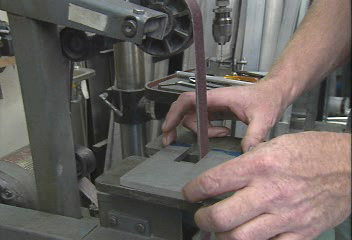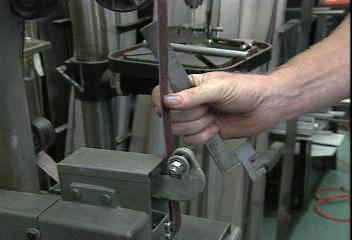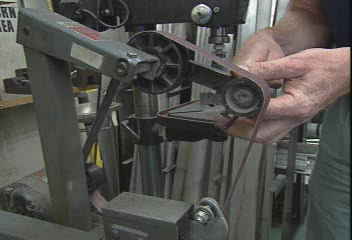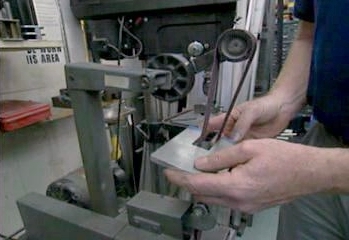


Many shops also have a small belt sander. It's similar to the large belt sander, but is better for some jobs and not as good at others. The belt is much thinner and has less room with which to sand, which means the belt gets much hotter. So this isn't the sander to use for most jobs. But it's a lot more flexible and can do some jobs the larger belt sander can't.

|
The small belt sander is a good choice if you want to sand convex surfaces, such as the end of a baseball bat. The usual problem with this job is that you don't want to sand with a flat surface or else you'll get flat spots on your piece. To get a good, smooth finish, you'll need to sand with a flexible surface.
The belt on a small belt sander can be made flexible by removing the plate from behind the belt. Then instead of having the flat surface of the steel backing up the belt, the belt will be soft and a little baggy.

|
The small belt sander can also be configured to sand concave surfaces. Take the third wheel and move it out front, and then you can sand using the curve of the wheel.

|

|

|

|
Adjusting the machine to sand concave surfaces |

|
Another useful configuration is to have the belt running over only two pulleys. This is convenient for sanding very narrow slots because you can sand both sides of the slot at the same time.